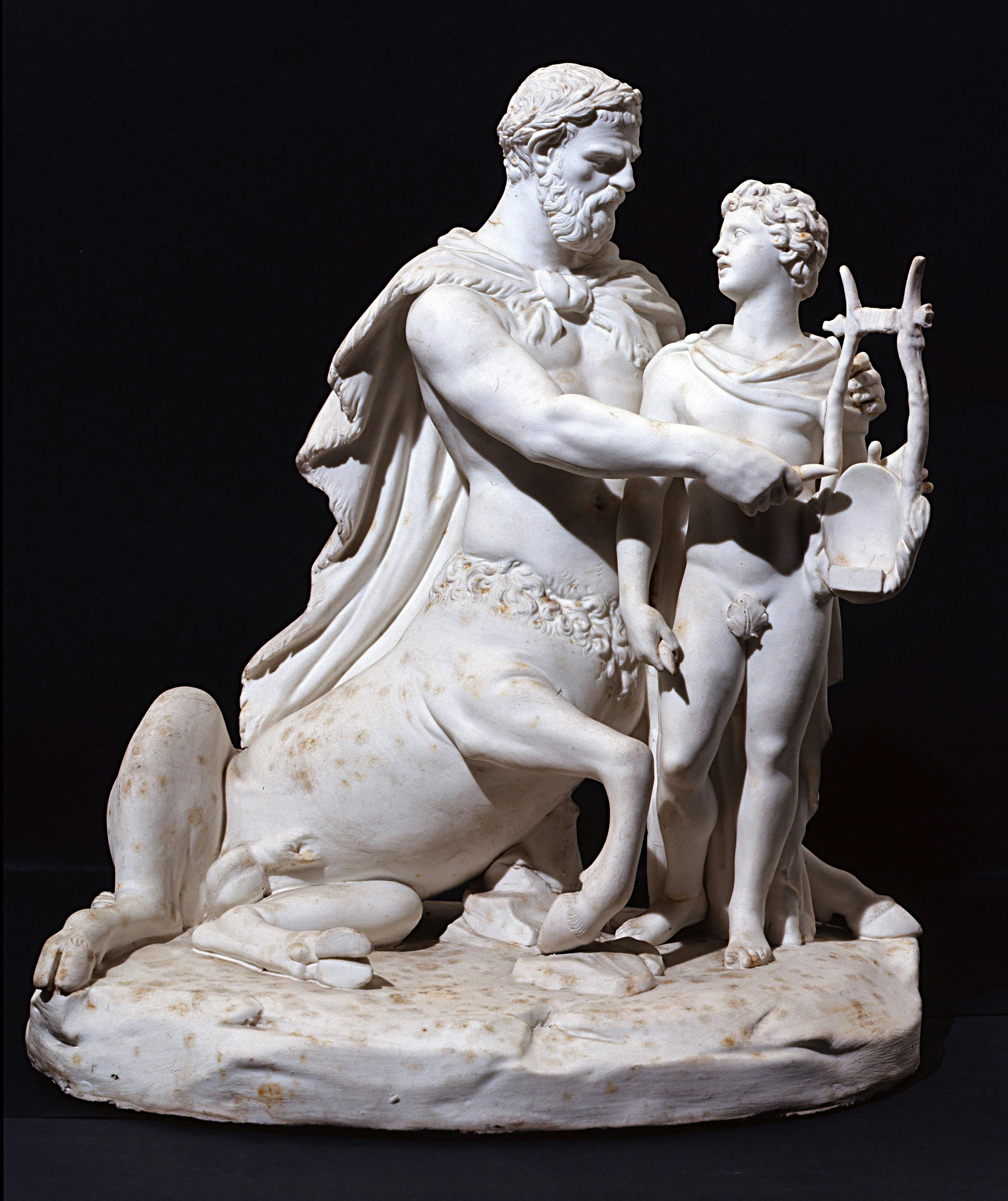The Centaur Chiron and Achilles
Filippo Tagliolini and Real Fabbrica Ferdinandea
The group represents the Centaur Chiron as he teaches Achilles as a child to play the zither. Together with the group Marsyas and Olympus, it was included by Filippo Tagliolini among the one hundred and fourteen biscuits that were to make up the decoration of the dessert table of Ferdinand IV, probably executed in 1785 on the occasion of his trip to Tuscany with his wife Maria Carolina Habsburg-Lorraine. It could, therefore, be a gift brought by the sovereigns of Naples to the Grand Duke Peter Leopold Habsburg-Lorraine.
Filippo Tagliolini, a sculptor with a neoclassical education, started at the Real Fabbrica Ferdinandea a production of antiquarian taste, strongly influenced by the travellers of the Grand Tour. The sculptures and paintings found in the excavations of Herculaneum (around 1738-1765) were taken as models, together with Etruscan subjects probably promoted by the Accademia Etrusca of Cortona and the statuary of the Farnese collection, transferred to Naples by Don Carlos around 1786. A fundamental sample proved to be the printed repertory entitled Le Antichità di Ercolano esposte (1757-1792) commissioned by Don Carlos. This is a series of volumes subdivided by type (paintings, small bronzes, oil lamps, etc.) aimed at providing a detailed description of the finds and paintings that have emerged from the archaeological excavations carried out at Herculaneum.
Our group has been reproduced by Tagliolini almost faithfully to the painting found during the 1739 excavations in the Basilica of Herculaneum and documented in 1757 both in Le Antichità di Ercolano and in Observations sur les antiquités d'Hercolanum by Charles Nicolas Cochin. This painting had as its pendant another depicting Marsyas and Olympus, also translated into biscuit by the manufactory. Even the choice of biscuit porcelain is justified by the representation of subjects taken from antiquity, given the visual proximity to marble, whose whiteness was particularly appreciated in the neoclassical era. The fortune of this type of production is revealed by the list drawn up in 1807, at the same time as ownership of the factory was transferred to Poulard Prad at the behest of the French government.
